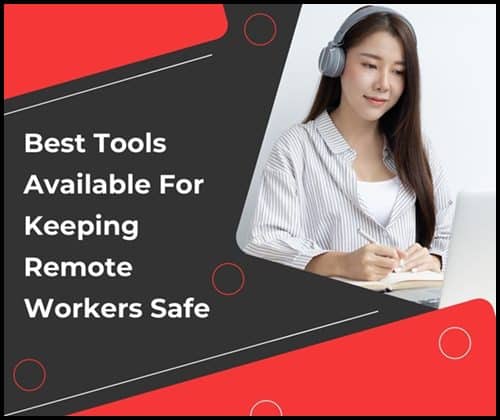With the COVID-19, remote working became the new normal. With this new work model, it’s safe to assume that millions of employees will be carrying out their work via their less-secure home networks. Worse, public Wi-Fi hotspots such as coffee shops and airline lounges are frequently used by workers as well.
This means it’s now critical to concentrate on keeping your remote workers’ data protected. Employees risk exposing the whole company’s network, regardless of how innocent or non-malicious their acts are. Hackers simply need one device to get access to the entire infrastructure and steal confidential data.
There are three essential protection tools businesses can use to secure remote workers’ devices.
1. SASE (Secure Access Service Edge)
SASE is a new concept that integrates network and security operations into a single cloud service, not only to avoid traffic passing through the data center but also to accommodate a remote workforce and the usage of cloud-based applications.
This enables users to have secure connectivity no matter where they are. Your staff won’t need any extra hardware because SASE employs an identity-driven paradigm. They can use their smartphone, tablet, PC, or other devices to connect to your network.
SASE provides flexible network connectivity for your workers while also freeing up your primary company connection for more mission-critical traffic. You can put your SASE solution in place and create a network to keep your employees connected.
Enterprises can retain edge-to-edge security while connecting remote workers using a SASE framework, avoiding bottlenecks and enhancing efficiency. SASE improves network security without sacrificing speed. It securely connects a remote worker to any app, on any device, from any location, without the need to set up multiple firewalls at each branch.
2. Cloud VPN services
A cloud VPN service is a virtual private network (VPN) that gives employees remote access to the company’s files, data and other cloud-based resources. It’s also referred to as a hosted VPN or a VPN-as-a-Service (VPNaaS). They allow businesses to grant remote staff access to their networks. To put it another way, they act as a secure interface between remote employees and business resources.
A cloud VPN for business is a logical match for enterprises that currently employ cloud-based software, platforms, and services. Cloud VPN services can easily be integrated into major cloud providers, and they’re deemed to be very secure.
They’re also a suitable fit for companies that blend cloud-based technologies with on-premises infrastructure. They allow end-to-end encryption to be used to connect the two into a single business network.
Then, remote workers can establish VPN connections to that hybrid company network using client software. As a result, no business data ever travel over an open connection without being encrypted. And the administration of the entire setup is always under the authority of the company.
3. Zero Trust networks
When a company’s digital assets must travel great distances across the dangerous Internet, the risk is too high that nothing and no one can be trusted. As a result, you should employ the Zero Trust network architecture to ensure that all users’ access to network resources is limited.
In its most basic form, Zero Trust is a security strategy based on the principle of “trust none, verify all.” It’s a type of security that focuses on who the user is rather than where they log on from.
Any attempt to access a resource in a Zero Trust network is restricted, regardless of whether the user or device has previously accessed the resource. Even when a person or device is physically within the office, they must go through an authentication and verification procedure in order to access resources. The Zero Trust model verifies users with tools such as 2FA or SSO so that the authentication process is user-friendly.
Any company that takes a holistic Zero Trust approach to security greatly reduces the risk of a data leak. Security policies are related to the identities of users and workloads in a Zero Trust architecture. This allows security to travel with assets, allowing security teams to have a better understanding and management of data as it travels between cloud environments and apps.
Ultimate Safety for Remote Workers
The new normal seems to be here to stay, and businesses must adjust to it. Organizational networks won’t have clearly defined physical borders anymore as long as remote work continues to be a daily reality.
In this environment, if companies do not want to jeopardize their businesses’ most valuable digital assets, they must implement new tools such as SASE, cloud VPNs, and Zero Trust network solutions as soon as possible.

Leave a Reply
You must be logged in to post a comment.